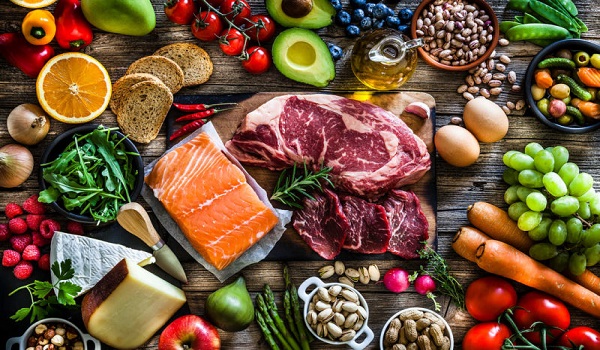In a notable move to address post-harvest losses and improve storage infrastructure, the Indian government is rolling out several schemes designed to bolster the establishment of cold storage units and warehouses for both perishable horticultural produce and foodgrains. This initiative aims to significantly reduce post-harvest wastage and ensure better storage solutions across the country.
The Mission for Integrated Development of Horticulture (MIDH) is a key program offering financial assistance for the construction, expansion, or modernization of cold storages. Under this scheme, a credit-linked back-ended subsidy of 35% of the project cost is available for general areas, while a more substantial 50% subsidy is provided for hilly and scheduled areas. The support is contingent on the Annual Action Plans (AAPs) submitted by States and Union Territories, reflecting local needs and available resources.
Additionally, the National Horticulture Board (NHB) has a dedicated scheme for the construction, expansion, or modernization of cold storages and Controlled Atmosphere (CA) storage facilities. This scheme provides a credit-linked back-ended subsidy of 35% in general areas and 50% in the North East, hilly, and scheduled areas. Notably, in the North East region, units with capacities exceeding 1000 MT are also eligible for assistance, highlighting the government’s focus on enhancing infrastructure in this key area.
Another significant program is the Scheme for Integrated Cold Chain, Food Processing, and Preservation Infrastructure (PMKSY), which operates under the Pradhan Mantri Kisan Sampada Yojana. This scheme targets the reduction of post-harvest losses and aims to provide fair prices to farmers. It offers grants of 35% for general areas and 50% for North East, Himalayan States, ITDP areas, and Islands for the development of storage and transport infrastructure. For value addition and processing infrastructure, the grants are higher, reaching 50% and 75% respectively, with a maximum grant-in-aid of Rs. 10 crore per project. However, standalone cold storages are excluded from this scheme.
The Agricultural Marketing Infrastructure (AMI) scheme, part of the Integrated Scheme for Agricultural Marketing (ISAM), focuses on enhancing storage capacity for agricultural produce by supporting the construction of godowns and warehouses. This scheme offers subsidies of 25% for plain areas and 33.33% for North East and hilly regions. It is available to a range of beneficiaries including individuals, farmer groups, cooperatives, and state agencies, reflecting a broad scope of support for agricultural stakeholders.
Furthermore, the government has introduced the Agriculture Infrastructure Fund (AIF), a Rs 1 lakh crore initiative aimed at strengthening agricultural infrastructure. Under this fund, there is provision for collateral-free term loans up to Rs. 2 crore and an interest subvention of 3% on loans used for creating post-harvest infrastructure, including cold storages. This fund underscores the government’s commitment to improving agricultural infrastructure through accessible financial support.
In related updates, a new mobile app has been launched for the upcoming 3rd World Food India 2024. This app will facilitate seamless access to event information, including buyer-seller meetings, event updates, speaker profiles, and real-time navigation features, enhancing the experience for attendees.
A 2022 study by NABARD Consultancy Services has also highlighted the critical need for such infrastructure improvements. The study found post-harvest losses ranging from 3.89% to 15.05% across various crops, including cereals, pulses, oilseeds, fruits, and vegetables, emphasizing the importance of these government initiatives in mitigating waste and improving efficiency in the agricultural sector.
The crop wise details are given below:
Annexure: Harvest and post-harvest losses of major agricultural crops and commodities
| Sr. No | Name of Crops/ commodities | % Average loss | Sr. No | Name of Crops/ commodities | % Average loss |
| Cereals | Vegetables | ||||
| 1 | Paddy | 4.77 | 28 | Cabbage | 8.15 |
| 2 | Wheat | 4.17 | 29 | Cauliflower | 7.89 |
| 3 | Maize | 3.89 | 30 | Green Pea | 6.43 |
| 4 | Bajra | 4.37 | 31 | Mushroom | 7.20 |
| 5 | Sorghum | 5.92 | 32 | Onion | 7.26 |
| 6 | Pulses | 33 | Potato | 5.96 | |
| 7 | Pigeon Pea | 5.65 | 34 | Tomato | 11.61 |
| 8 | Chick Pea | 6.74 | 35 | Tapioca | 4.87 |
| 9 | Black Gram | 5.83 | 36 | Bottle gourd | 7.01 |
| 10 | Green Gram | 6.19 | 37 | Brinjal | 7.41 |
| Oilseed | 38 | Beans | 7.11 | ||
| 11 | Mustard | 4.46 | 39 | Radish | 6.46 |
| 12 | Cottonseed | 2.87 | 40 | Capsicum | 5.15 |
| 13 | Soybean | 7.51 | 41 | Okra | 6.01 |
| 14 | Safflower | 3.06 | Livestock Produce | ||
| 15 | Sunflower | 4.38 | 42 | Egg | 6.03 |
| 16 | Groundnut | 5.73 | 43 | Inland Fish | 4.86 |
| Fruits | 44 | Marine Fish | 8.76 | ||
| 17 | Apple | 9.51 | 45 | Meat | 2.34 |
| 18 | Banana | 7.57 | 46 | Poultry Meat | 5.63 |
| 19 | Citrus | 7.71 | 47 | Milk | 0.87 |
| 20 | Grapes | 7.15 | Plantation Crops and Spices | ||
| 21 | Guava | 15.05 | 48 | Arecanut | 4.41 |
| 22 | Mango | 8.53 | 49 | Cashew nut | 3.72 |
| 23 | Papaya | 6.59 | 50 | Coconut | 3.86 |
| 24 | Sapota | 9.53 | 51 | Sugarcane | 7.33 |
| 25 | Pineapple | 6.02 | 52 | Black Pepper | 1.29 |
| 26 | Pomegranate | 6.82 | 53 | Chilli | 6.11 |
| 27 | Muskmelon | 6.83 | 54 | Coriander | 5.32 |
| 55 | Turmeric | 5.36 |


